How to Start with Medicine Delivery App Development in 2024
Pharmacy is a challenging industry with thousands of companies fighting for a place at the top․
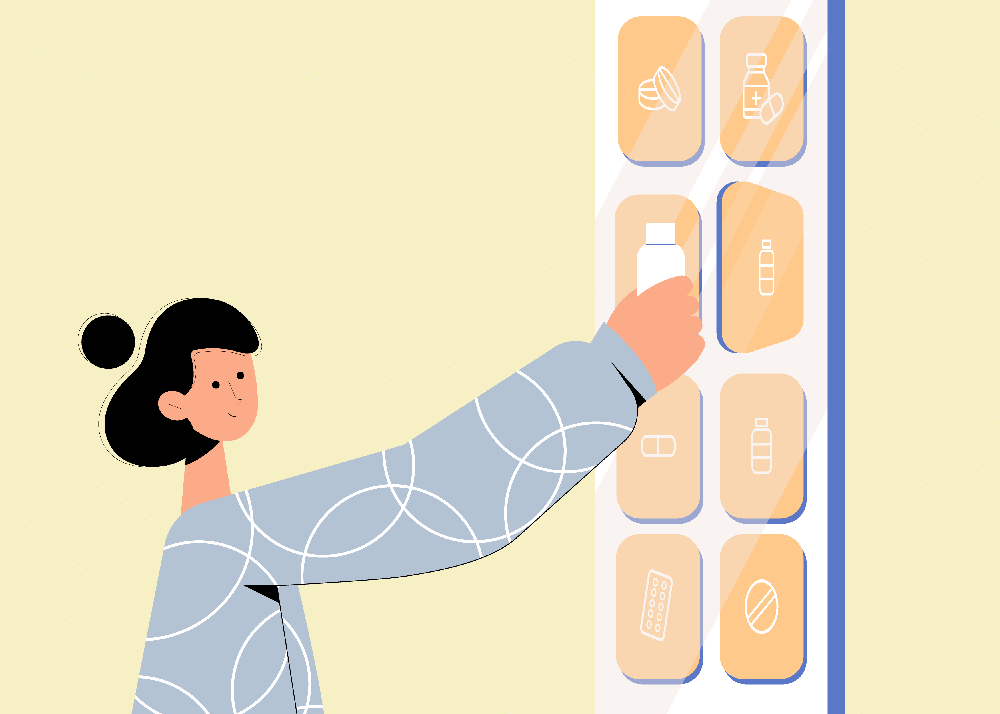
Innovations, marketing campaigns, and business development strategies allow companies to stay afloat in the overcrowded scene of the pharmacy industry.
One of the most promising areas for business development is the e-pharmacy market. The current popularity of this sphere is fully explained by projected market growth. According to the latest research, the global e-pharmacy market was estimated at $98.8 billion in 2022. The market is expected to reach $206 billion by 2028 at a CAGR of around 16,8%.
Do you want to explore medicine delivery app development?
This article will explain why and when it is worth investing in a pharmacy delivery app today and what benefits you will be able to reap over the years to come. This article touches on the following critical aspects of the industry and app development:
- Key benefits of medicine delivery apps for businesses and companies.
- The best business models for a prescription delivery app
- Features to include in medicine delivery app development
- Technological stack needed for an online pharmacy app
- How to make money with a medicine delivery app
- Detailed guide on how to manage development process
- Main cost drivers for the development
Let’s learn how you can create a medicine delivery app and turn it into a successful business.
Why Businesses Invest in Medicine Delivery Apps in 2024
Medicine delivery apps are growing in popularity. They have witnessed a considerable surge amid the pandemic and still register a rise in demand.
In 2021, the pharmacy delivery market was estimated at $1.656.9 billion. The market is predicted to grow at a CAGR of 5,9% and reach $2.206.5 billion by 2026.
A pharmacy delivery app bears a lot of benefits for customers and pharmaceutical companies. Medicine order via a mobile app saves time, grants access to a wide choice of medicine options, preserves privacy, etc.
Here are the main benefits of prescription delivery apps for customers:
- Ordering of drugs from the comfort of their homes
- No need to leave the house
- Wide choice of medicine
- Access to details on drugs and medicine
- Discounts and special offers
- Ability to track orders
- Fast price comparison
Medicine apps offer benefits for pharmacies also:
- Broader pool of customers
- Advanced analytics
- Robust marketing tools
- Higher customer engagement
- Easier customer retention
There is no doubt that medicine delivery app development is an up-and-coming business area. Due to the current epidemiologic situation in the world and uncertain future, solutions offering home drug delivery will grow in popularity. Start creating your prescription delivery app today, and you will get a secret weapon that will help you stand among competitors over the years to come.
Business Models for a Pharmacy Delivery App
Medicine delivery companies mostly use two business models to run their businesses and generate revenue. Before starting with app development, you need to first decide on the business model that will suit your business.
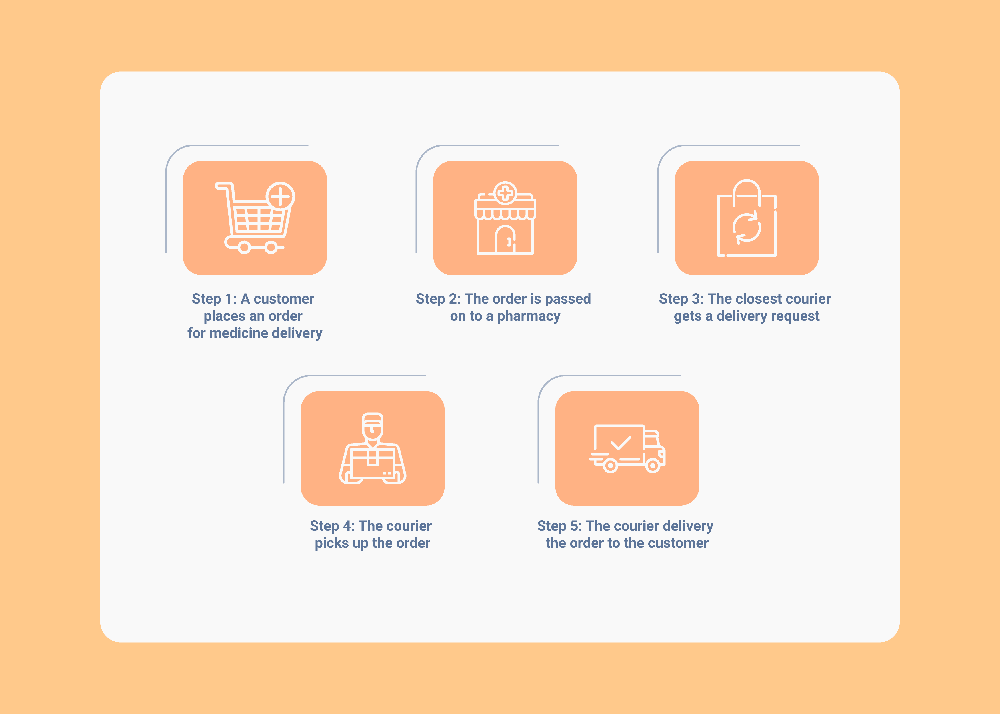
Take a look at two primary business models and learn how they differ:
- 1st Business Model
This business model is suitable for big pharmacies that store a lot of medications. Such companies can create a medicine delivery app for their own business and expand from offline to the online world. The main advantage of such a business approach is high brand recognition. Still, this business model requires having a massive inventory of drugs you can offer.
- 2nd Business Model
The second business model implies acting like an intermediary between customers and medicine suppliers. Such prescription delivery apps serve as order aggregation systems and deliver drugs from third-party pharmacies.
This business model doesn’t require the creators of such apps to store any drugs. They are only responsible for taking, processing, and sending orders to pharmaceutical delivery drivers.
Depending on the type of business, you will need to choose one of the available business models before starting with medicine delivery app development. This way, you will be able to better organize the development process, come up with the best feature set, and find a vendor with relevant experience.
Prescription Delivery App Features
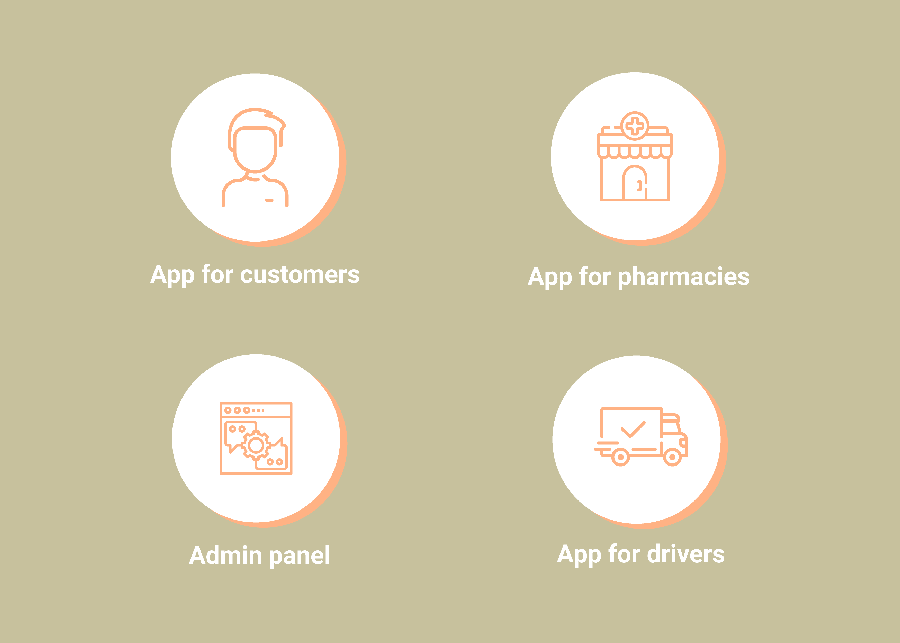
There are different ways to develop a medicine delivery app. Depending on the business model and business needs, you might need to develop up to four separate parts of the app. In most cases, a pharmacy delivery app consists of the following elements:
- An app for customers
- An app for pharmacies
- Admin panel
- App for drivers
Below, you can find a detailed overview of the most popular features for each of the panels mentioned above of a prescription delivery app.
Features for Customers

To provide a better user experience and functionality, the application should be staffed with basic features for the value proposition:
- Registration and Login – users should have the ability to create an account inside your applications. This feature can be approached in different ways, and the most efficient one is to integrate social login to speed up the process of sign-ups and sing ins.
- Profile management – after customers successfully create a new user account, they should be able to add their personal information, like name, credit card info, shipping address, etc. Profile management should also include the ‘forgot the password’ feature.
- Add prescription – users should be able to add prescriptions for further verification by pharmacists. This feature should support different forms of prescriptions uploading, e.g., images from a device’s gallery, documents in PDF, and other formats.
- Search medicine – customers use prescription delivery apps mainly to find drugs. Thus, providing a robust medicine search is a must since it will help customers find products they need without spending much time on your application. It’s possible to add different filters and allow search by categories, manufacturers, similar medicine, etc.
- Order medicine – customers should be able to place orders within your pharmacy delivery app.
- Pay for orders – mobile payment is prevalent, and the pharmacy industry is no exception. Thus, you need to provide patients with the ability to pay for their orders without leaving your application. Make sure to provide different payment options so that users have a choice.
- Order history – it’s a nice-to-have feature, especially for long-term customers with chronic diseases. By visiting such a section inside your app, patients will be able to quickly reorder medicine without navigating through your app again.
- Drug details – before purchasing, customers tend to review a product and find all the needed information, especially if the product concerns their health. Thus, you need to provide a detailed description of each medicine, including information about the ingredients of medicine, possible side effects, etc.
- Ratings & feedback – customers should have the ability to report any problems or rate products and services you provide. Therefore, you need to provide a feature allowing them to provide customer feedback. Providing a smooth buying experience, you will be able to turn social proof into a powerful tool for user attraction and retention.
- Provide page – this feature is essential for businesses working on the second business model. Users should be able to visit a provider’s page, view other offered products, leave a review of that provider, and much more.
- Notification – there are different ways to implement this feature. You can remind customers about a new medicine, upcoming discounts, and special offers. Take this feature further and remind them about the need to replenish the medicine stock they regularly use to treat some chronic diseases.
- Refund query – the feature that can show your customer that they are protected when working with your application. Users should be able to ask for a refund if an order is not delivered, delivered a wrong one, etc.
Aside from the above basic features, you can include some unique ones in medicine delivery app development.
Learn how to wow your customers with a robust prescription delivery app:
- Discounts & reward system – remember that acquiring a new customer is five times as expensive as retaining an existing one. Discounts can become a powerful weapon in user retention, helping you keep an interest in your medicine delivery app over a long time. You can also develop a reward system and give rewards for each successful purchase, enticing users to continue ordering drugs with your digital product.
- Fast reordering – this is a nice feature that allows saving time. Users can set up an automatic medicine refill every week, month, etc. The scheduled delivery feature is vital for users with chronic diseases.
- Search for substitutes – you can increase the likelihood of order placing by offering similar medications and allowing users to look for ones inside your pharmacy delivery app.
- Built-in chat – the feature allows users to ask questions about drugs, delivery, components, and other important information.
- Order tracking – for busy people, this feature will become life-saving. Allow users to track their purchases on a map to calculate delivery time.
- Online doctor consultation – a prescription delivery app can become a part of a bigger system allowing you to have an online doctor consultation.
Features for Pharmacies

Medicine delivery apps also have a panel for pharmacy staff. Such features can be used when selling your own products or allow third-party vendors to sell through your application.
- Register/Login – if you decide to build an online pharmacy app where third-party vendors will sell their products, you won’t be able to go without this feature. Vendors should have the ability to create an account and provide their basic information.
- Account Management – after vendors create an account, they should be able to provide their business details and add information when needed.
- Order management – the feature should help pharmacies process and manage orders, make returns, control refunds, verify prescriptions, etc.
- Order notifications – notifying pharmacy staff upon receiving a new order is crucial for fast order processing.
- Digital prescriptions – pharmacies should be able to view and verify prescription files.
- Payments – this is one of the must-have features since a pharmacy should be able to receive payments directly in your app, get information about all active payments, and control their flow.
- Order history – provides pharmacy staff with historical information regarding all orders.
Aside from basic features, you can enhance your pharmacy delivery app with some advanced features:
- Analytics – this feature should provide insights into sales and payments. Pharmacy staff should be able to view information on sold products, identify bestsellers, spikes in demand for a specific medicine, and get other helpful business insights.
- Push notifications – allows pharmacies to interact with customers with push notifications to tell about order processing status, offer discounts, etc.
- Discounts – a robust system of discounts should help pharmacies sell more. You can either create a system with built-in rules or allow pharmacy staff to create their own loyalty or discount programs.
- Delivery tracking – helps pharmacies to keep track of orders delivery.
- Related medications – this is another feature designed to help pharmacies sell more by offering similar medicine.
Built-in chat – when it comes to medications, customers can have many questions and might seek help finding the necessary information. Built-in chat will let pharmacies answer their questions and provide patients with professional recommendations.
Features for Admins
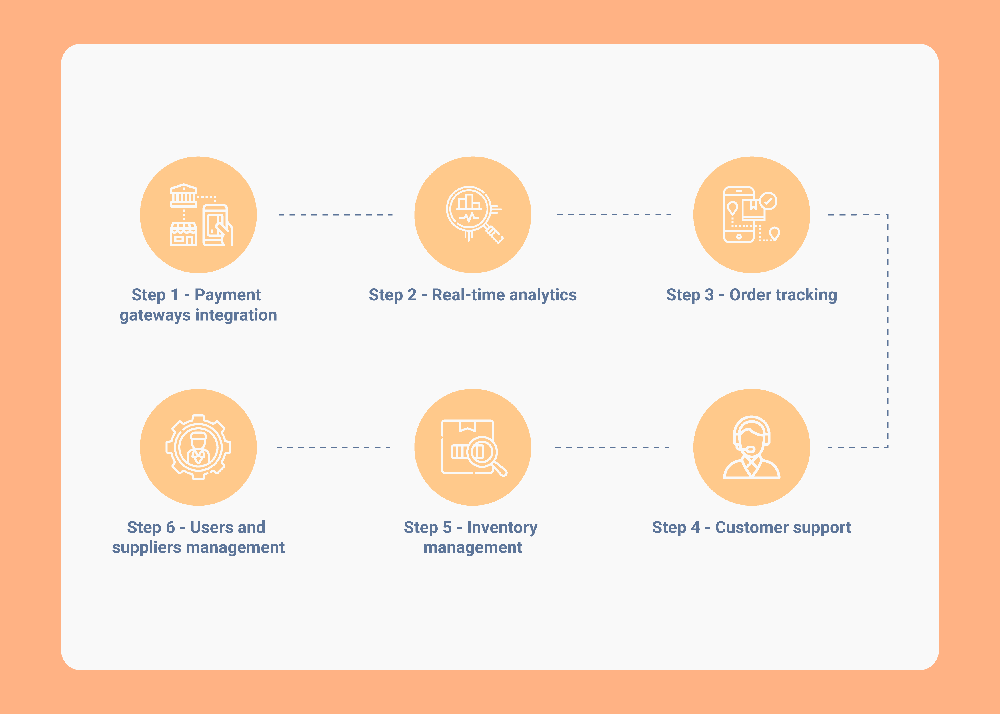
An admin panel is an integral part of any prescription delivery app. Find below the main features your app will need:
- Dashboard – a robust dashboard to manage all your orders, deliveries, customers, third-party vendors, etc.
- Payment gateways – medicine delivery app development should also include integration with multiple payment solutions enabling customer payments directly in your app. By including a few solutions, you automatically increase the chances of attracting more customers.
- Analytics – Real-time analytics provide insight into orders and their statuses, canceled orders, chargebacks, payment, etc.
- Order tracking – admins should be able to see all orders placed by customers across all registered pharmacies.
- Customer support – ensures that customers won’t be left alone with any issues and problems. Admins should be able to call customers for clarification.
- Inventory management – it is an important feature that allows timely replenishment of products, keeps track of expiration dates, and prepares for seasonal spikes in demand.
User and supplier management – admins should be able to manage all users, pharmacies, suppliers, etc.
Features for Couriers
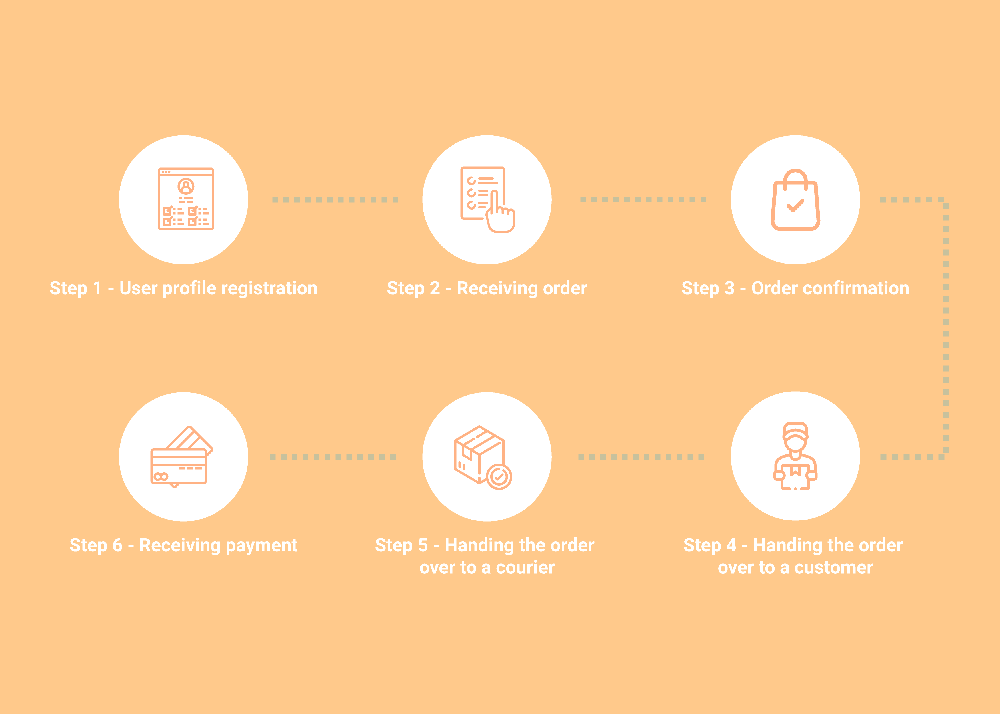
Couriers are integral for any delivery applications. Medicine delivery app development should include the creation of a separate app for drivers.
Let’s find out the main features of a medical delivery driver app:
- Registration/Login – naturally, this is the first feature for a pharmaceutical delivery driver. Couriers should be able to sign up in your application. Once again, the best solution is to integrate social login.
- Courier profile – after registration, drivers need to add their personal information to the app.
- Push notifications – this feature makes couriers’ work more accessible since they receive push notifications when a new order is received and about all changes happening to an order.
- Navigation – couriers should have access to different map systems to help them find the best routes to a destination without leaving your application.
- Delivery status – this feature allows a driver to change the status of an order from “received” to “delivered.”
Additional features will make your application much more user-friendly for medicine delivery drivers:
- Analytics – provides insight into all delivered orders, allows tracking income for a day, week, months, etc., and how customers rate each order.
- History of delivered orders – drivers should be able to view the whole history of all delivered orders.
- Work status – this feature allows to easily set the work status to “working” or “day off.”
Monetization Strategies for a Medicine Delivery App
The main goal of creating a prescription delivery app is the business advantage, the possibility of reaching a wider audience, and increasing sales.
How can you make money with a pharmacy delivery app?
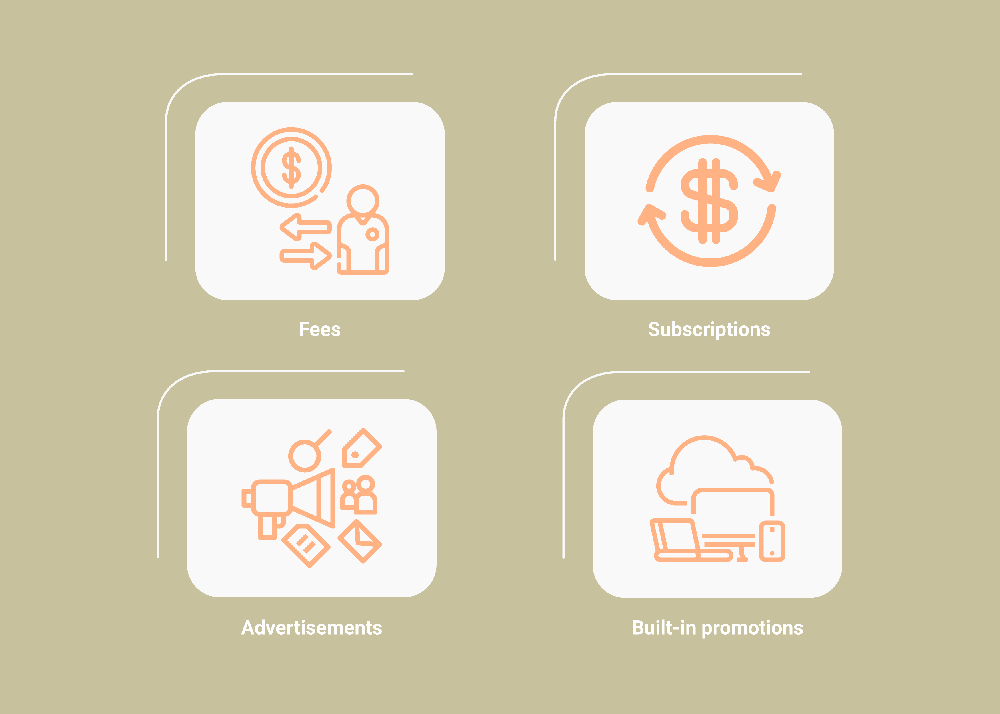
There are a few approaches to monetization of a drug delivery app that you can utilize to turn on-demand medicine delivery into a profitable business:
- Fees – if you allow third-party vendors to sell products on your platform, you can make money by taking some fee for each product sold or for revenue.
- Subscriptions – it is another monetization strategy that can bring significant revenue. Customers who pay for subscriptions can be offered free delivery or a discount on medicine.
- Advertisements – another popular approach that can turn an online pharmacy delivery into a substantial revenue stream is to place ads inside your application. You can promote medicine, other pharmacies, or products offered by third-party medical vendors.
- Built-in promotion features – this strategy is suitable for medicine delivery apps that act as marketplaces for third-party vendors. You can allow them to promote their own businesses inside your application and get money for placing their companies in the recommended section, showing medicine at the first position in search results, etc.
One or several monetization strategies can be utilized depending on the business model. You need to understand which ones you will choose before starting medicine delivery app development since making drastic changes in the middle of the development process might be costly.
Technology Stack for Medicine Delivery App Development
Prescription drugs delivery apps consist of different parts and have complex backend architecture. A wisely chosen technology stack guarantees a smooth medicine delivery app development process.
The development of a pharmacy delivery app requires the development of the front-end and back-end and API integrations (Application Programming Interface).
1. Front-end is a client-side of an app. This part consists of visible elements that users interact with.
Take a look at the table below explaining how to create a prescription delivery app depending on the platform type, i.e., Android and iOS
| iOS | Android | |
| Programming language | Swift, Objective C | Kotlin, Java |
| IDE | AppCode, Xcode | Android Studio |
| Development OS | Mac OS X | Ubuntu, Mac OS |
| SDK | iOS SDK, Cocoa Touch | Android SDK |
2. The back-end is a server-side of a project that corresponds with all operations performed behind the scenes. The table below explains the main technologies used for back-end mobile application development.
| Programming languages | Ruby, Java, Node.js, Phython, etc, |
| Web frameworks | Ruby on Rails, Flutter, |
| Database servers: | mySQL, PostgreSQL, MongoDB |
| Web servers | nginx, Apache |
| Cloud server platforms | Amazon Web Services |
3. API (Application Programming Interface) – this protocol describes how the front-end of an app interacts with the back-end.
| Category | Integration |
| Payment gateways | Braintree, Stripe, PayPal, GooglePay, ApplePay, etc. |
| Social media | Facebook, Instagram, Twitter, etc. |
| Analytics tools | Google Analytics, MixPanel, etc. |
| Navigation | Google Maps, Google Places |
| Email marketing | MailChimp, SendGrid, Twilio |
| Storage | Cloud Storage, Storm On Demand API |
How to Start with Medicine Delivery App Development
The development consists of different stages. You need to find a unique selling proposition, identify competitors, find a reliable software development vendor, launch, and promote your application.

Let’s elaborate on each pharmacy delivery app development.
1. Market analysis
Every successful application development starts with a thorough market analysis.
This stage includes several substages, during which you will need to identify the market size, learn about the perspectives of medicine delivery app development in a specific region, which problems can arise on your path, and who are your competitors.
2. Business model and monetization strategy
After you’ve successfully investigated the medicine delivery app market landscape, it’s time to choose the best business model for your application. Look back at the sections explaining different business models and monetization strategies. Decide which features you will need in your application to meet all requirements of the model you choose.
3. Find a mobile app development company
Finding the best software development vendor is no less important than coming up with a strong USP. There are a lot of regions to which you can outsource app development. Still, Europe stands out thanks to a huge choice of companies, high-tech expertise, and comparatively low prices.
Note: Remember that the location where you outsource app development impacts the final development cost. In Europe, the hourly development rate is about $50-80, while the development cost in the USA is $150-200 per hour.
4. Decide on prescription delivery app functionality
Depending on the business model and monetization strategy you’ve previously chosen, you need to decide on the functionality of the future app.
You can start the development with the first version of an app that will include only basic functionality. Choose wisely not to make it cluttered with functionality that users don’t need.
Additional features can be added to the app after successful app idea validation and on further development stages.
5. Test and launch a medicine delivery app
Medicine delivery app development must include a testing stage at which Quality Assurance Engineers test every part of an app, starting from UX and UI and moving to code, front-end, etc.
6. Plan for ongoing development & support
The work on your app doesn’t stop with the release to the market. As soon as your app is successfully released, you need to plan the next app version and make improvements to improve the user experience.
7. Marketing & Partnerships
Aside from software development, you need to dedicate time to promote the application, find partners, suppliers, couriers, etc. You can ask your partners to advertise your applications to attract new users. Target large pharmacy chains to partner with the app that will promote your product and build your reputation in the market.
What is the Cost of Developing a Pharmacy Delivery App?
The cost to develop a prescription delivery app depends on several factors:
- The number of features and their complexity
- Which platforms you target (iOS, Android, or both)
- Location to which you outsource medicine delivery app development
- Additional provided services (business analysis, market research, etc.)
Usually, the development of a single app version (Android or iOS) for one user app (client app, courier, admin, or pharmacy) starts at round $16,000 – $30,000. Thus, you will need to spend at least $50,000 - $200,000 on a working version of a drug delivery app.
Medicine Delivery App Development, Medical Apps, Medicine Delivery App, Mobile Medicine, Healthcare and Medical Apps, Create a Streaming Service, Medical Mobile Apps, Tools Developer, Mobile App Prototype, Social Media App, Telemedicine, Food Delivery, IOT App, Cost Calculation, Wallet App, Outsource, Communication App,
Develop Your Medicine Delivery App
Revolutionize healthcare with your own medicine delivery app
Our Expertise Covers:
✅ Prescription upload and verification
✅ Real-time order tracking and notifications
✅ Integration with pharmacy inventory systems
Table of contents
FAQ
The pharmacy delivery market was estimated at $1,53 billion in 2020. The market is predicted to grow to $2,015 billion by 2025. There is still a lot of space and potential for new solutions offering medicine delivery services.
The cost to create a medicine delivery app depends on the number of features, their complexity, the location to which you outsource app development, etc. The cost to develop a working version of a pharmacy delivery app is starts at round $16,000 – $30,000 lest still $50,000 – $200,000 for a single app version (iOS or Android).
Medicine delivery apps consist of a few panels for:
- Customers
- Pharmacies
- Admins
- Couriers
Depending on the business model, you might need to create all these parts or just a few of them.
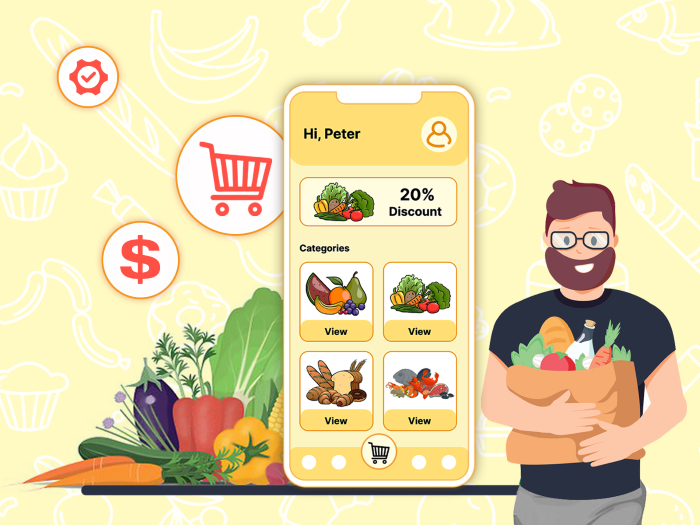 Grocery Delivery App Development: Tips, Cost & Steps
Grocery Delivery App Development: Tips, Cost & Steps
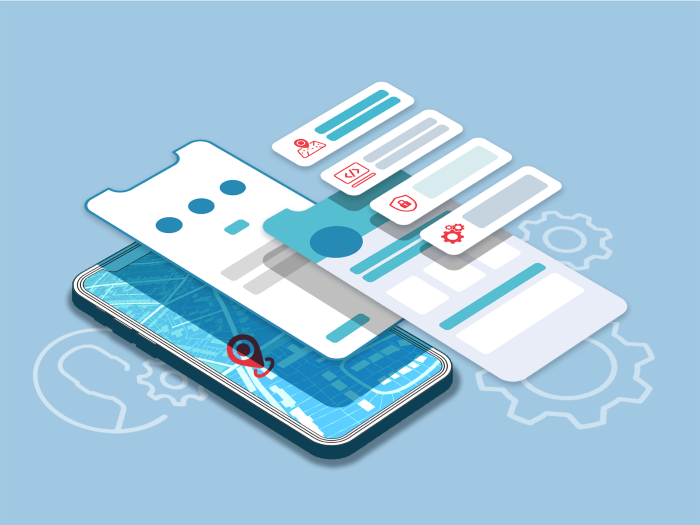 Must-Have Uber App Features: Building a Ridesharing App
Must-Have Uber App Features: Building a Ridesharing App
 How to Make an App Like Uber: Features and Tech Details
How to Make an App Like Uber: Features and Tech Details